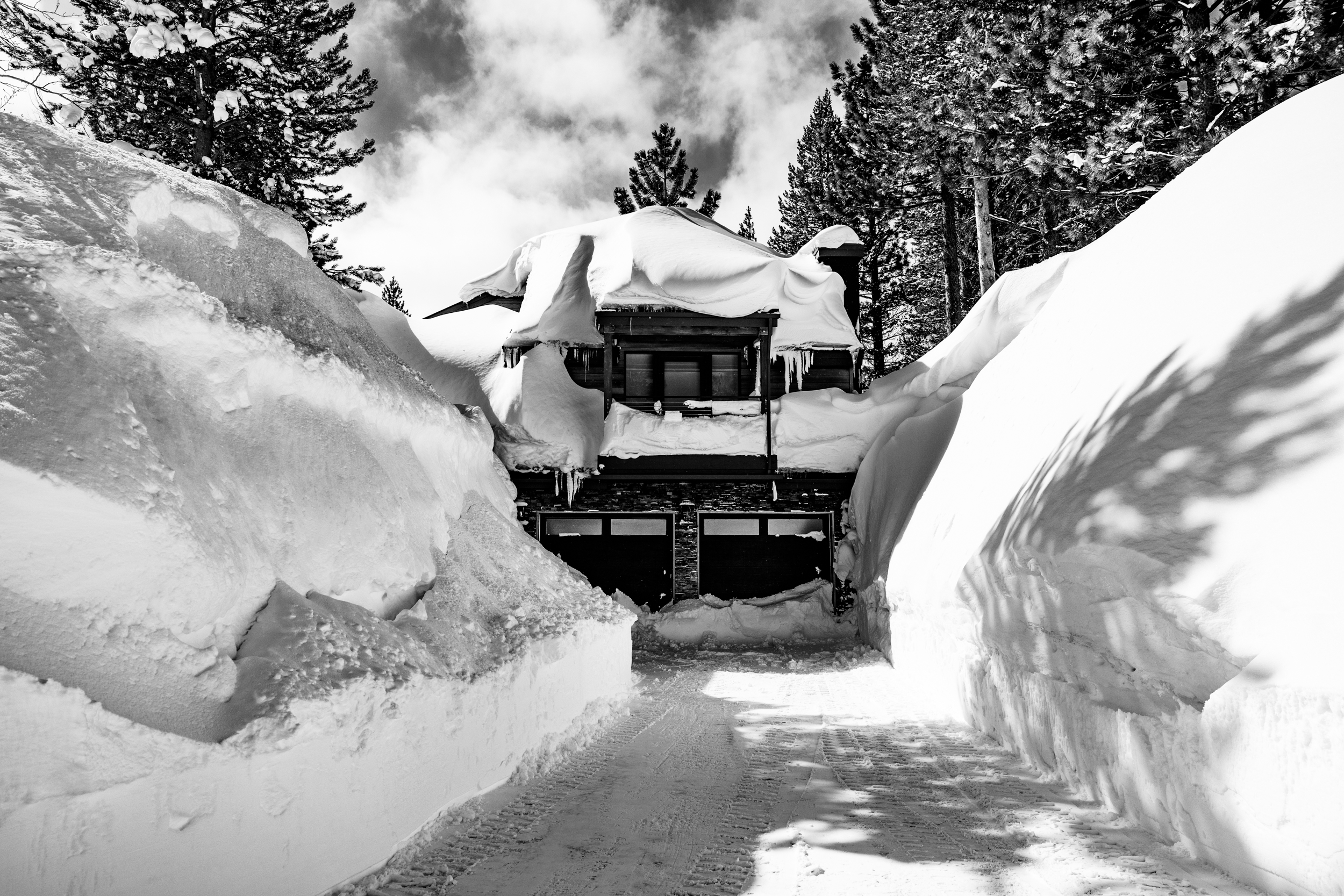View this post on Instagram
How much snow is too much snow?
Mammoth Mountain’s Main Lodge has received 618″ of snowfall at its Main Lodge this season, which is only 50″ from the ski area’s highest-ever recorded seasonal snowfall total of 668″ in 2010/11. With another atmospheric river beginning today, meteorologists are calling for 3-5 feet of snow in Mammoth over the next several days.
As a result, Mammoth has closed its Main Lodge as resort crews prepare the mountain for the incoming storm. Visit Mammoth shared a social post on Thursday describing the closure:
The second round of Atmospheric River storms started this morning and quickly blanketed town in snow. This cycle is forecasted to last through tomorrow.
Mammoth Mountain’s Main Lodge is closed today as are many of its operations. Please check its social pages and website for the most up-to-date information.
Additionally, services around town are being affected and some structures have failed and roofs have collapsed due to heavy snow loads. Please pay attention to your surroundings.
With our Town Public Works staff, Caltrans plows, and first responders working hard to keep the roads safe, and now structures around town, please do not drive or travel unless absolutely necessary. Keep an eye on road information and DO NOT try and avoid road closures and take alternate routes. If Caltrans says the roads are closed, they are closed! Visit Roads.dot.ca.gov for up-to-the-minute road conditions/chain restrictions, or use the Caltrans Quick Map: Quickmap.dot.ca.gov before you get on the road. You can also call the Road Condition Hotline at 1-800-427-ROAD (7623).
Now more than ever, please Be Patient. Be Considerate. Be Kind. And Be Safe!
Thankfully, Mammoth Mountain’s world-class snow maintenance team is working diligently to clear buried structures and snow-covered roofs to ensure the safety of the mountain’s guests.
Hang tight, Mammoth—you’ve got a snowfall record to break!
For those living in Mammoth Lakes and other snow-buried regions of California who don’t have snow maintenance teams working around the clock to ensure safety, this is how to calculate how much snow your roof can hold according to snow scientist Randall Osterhuber:
A simple equation is used to calculate the weight of snow on a roof:
HS x density x 62.5 x cosine(roof angle) -HS is the height of the snow (feet). Density is the average density of the entire snow height profile (expressed as a fraction) Density is the percent of any snow volume that is occupied by ice. There are particular tools to measure this, none of which you will own. But you can make a go of it. You’re probably really good with your shovel by now.
Cut a nice, clean cube of snow, one foot on a side. 12” x 12” x 12”. Weigh it. The weight, divided by 62.5 will be the density of that snow sample. If your block weighs 21 pounds, its density will be .34; if the block weighs 30 pounds the sample has a density of .48. Density varies throughout the height of the snow profile, so if you can cut several blocks and get an average, that helps.
Example: You have 98 inches of snow on your roof or 8.2 feet. You measure the average density at .39. Your roof is sloped 20 degrees above horizontal. 8.2 x .39 x 62.5 x .94 = 188 lb/ft2 If your house has a roof 40 feet x 40 feet in area (1600 ft2), it’s holding up 300,800 pounds of snow. Some roof lines are simple, many are complex. HS will vary, as will density.
Snow loads on roofs are not static, they are dynamic. The snow is always moving so the forces it exhibits are always shifting. And many roofs are differentially loaded, meaning there is more snow on some portions than others. This can be caused by wind, sun, tree cover, how much heat is released from the structure below, and the routing of free water (meltwater) flowing through the snow. Differential snow loads exhibit lateral forces to the structure. Though most wood-framed structures are incredibly strong under compressive forces, they are considerably less robust with laterally applied forces. Beware the mid-winter earthquake!

I cannot believe that this subject has not come up previously. It is almost too late.